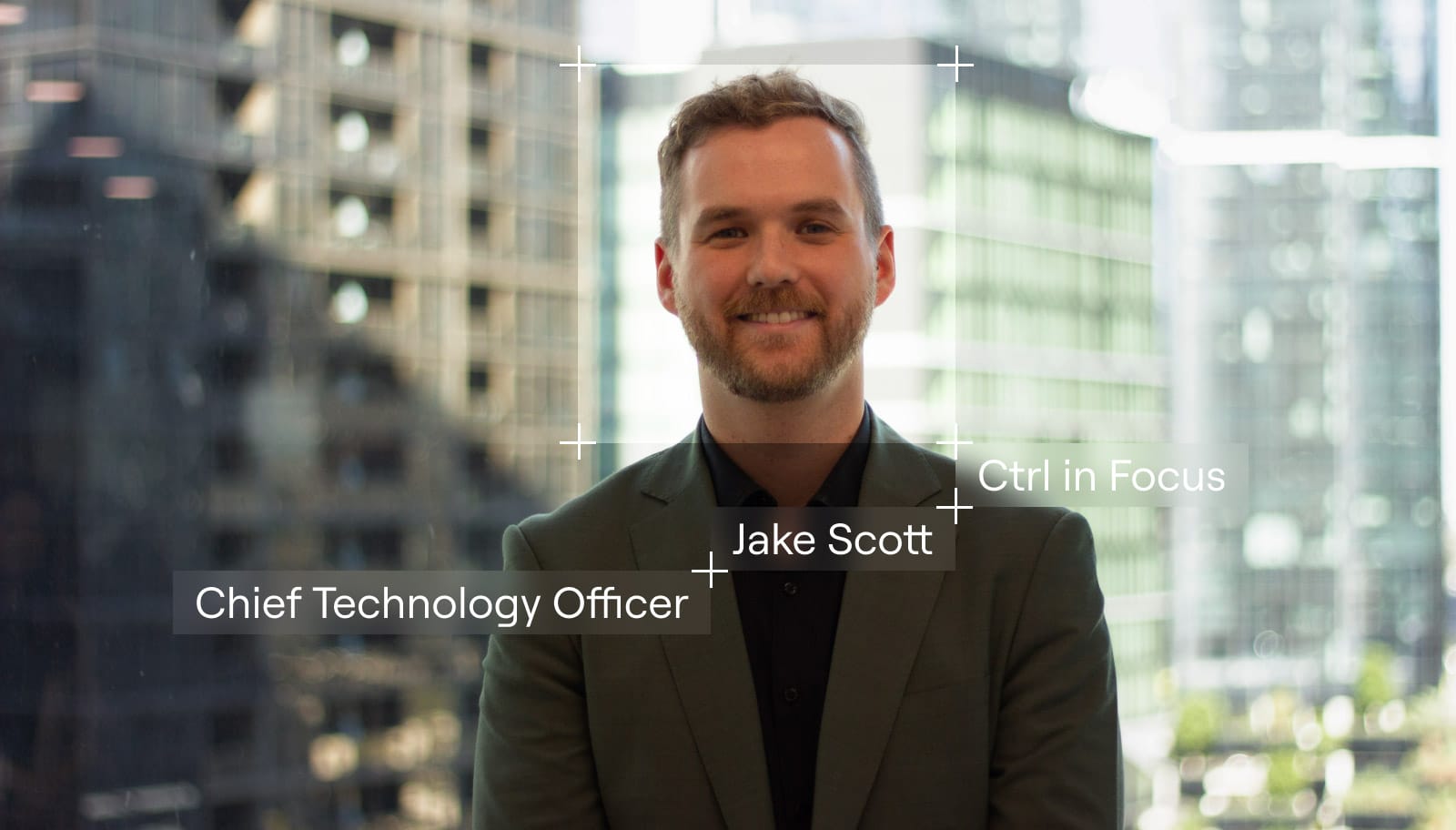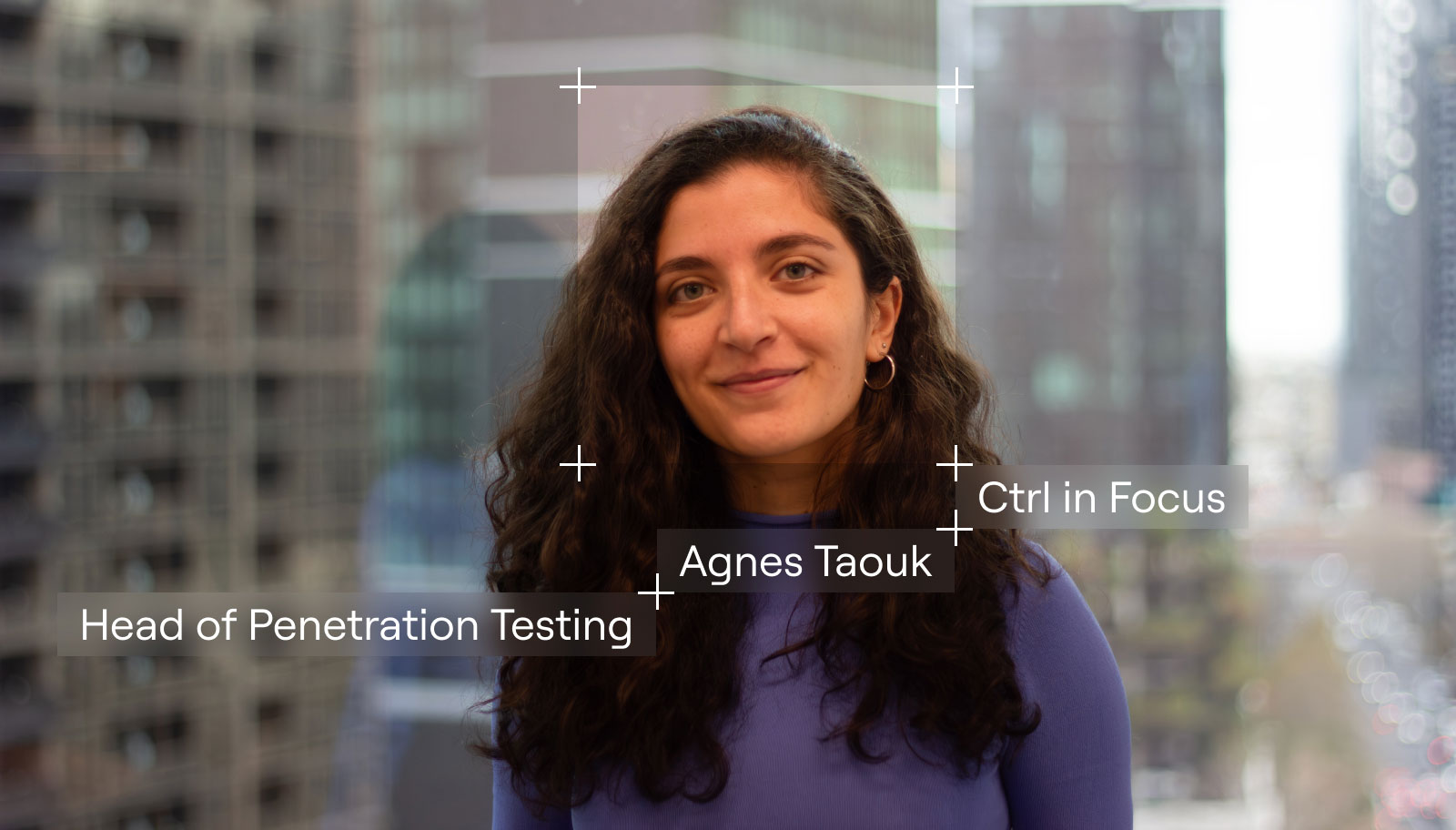Ctrl In Focus: Meet Jake, Chief Technology Officer
Brand 28.07.25
Not many can say they’ve grown from intern to Chief Technology Officer at the same company, but Jake can.
His journey at ctrl:cyber began in the SOC, starting as an intern and quickly becoming known for his ability to solve complex problems and improve how teams work. Since then, he’s built automation that transformed analyst workflows, led product development, driven operational strategy, and now oversees Ctrl’s entire technology direction as CTO. We sat down with him to talk about the path so far, what he’s focused on next, and what success looks like from here. Read the Q&A below.
Q. You started as an intern in the SOC. what did that role teach you about threat detection, and what clicked with you most?
A. The internship was my first ever role in cybersecurity. I’d initially applied for a Penetration Testing position I was quite underqualified for but must have made an impression, because I was offered the internship instead.
At the time, I knew what a threat looked like in theory, but understanding real client logs was something else. You can’t take an alert at face value. Thankfully, I had a supportive team who took the time to help me learn.
I quickly realised threat detection isn’t just about deploying the latest tech. It relies on effective risk management and building a secure, adaptive architecture that grows with the business to maintain visibility and coverage.
What really clicked for me was investigation. I’ve always enjoyed following a trail. A simple IPv4 IoC once led us to exposed threat actor infrastructure, compromised businesses, and stolen credit cards. There’s always something new to uncover and remediate.
Q. As you transitioned into a Security and Automation Engineer, what problems were you most excited to solve?
A. Automation, for me, has always been about respecting everyone’s time. The more we automate the mundane, the more we can focus on complex, high-value work.
On the Security Engineering side, it’s always been about making networks safer, not just for the business, but for its people and customers. The impact of a breach can be far-reaching, and in this role, you see the difference every time a patch is applied, a detection rule added, or a control stops a threat before it escalates.
Q. Your work in automation helped streamline key services – can you share one solution you’re especially proud of?
A. My time in the ROC developing automations in our SOAR has easily had the biggest impact on the business. When I first started as an intern, everything was manual. Every detection and report were handwritten and took hours to complete. Using a new tool at the time, I wrote Python code to ingest, standardise, and correlate data from diverse client environments into the records we needed, allowing most of the analyst role to be done with the click of a button. For us as analysts, it meant more time spent doing what we do best: analysing potential threats. From those foundations, we’ve been able to build a lot, including internal product development.
Q. What did the shift into Head of Product and Automation teach you about balancing user experience with technical complexity?
A. We can have a very diverse technical audience who have individual preferences on how in-depth findings and information need to be communicated. Striking the balance between being high-level enough for strategic decision making and in-depth enough for meaningful remediation actions can be difficult to get right every time. The more data centric the approach is the more you can cater to both audiences. A good dataset means that you can address strategic stakeholders with high level insights, and your technical audience with in-depth analysis.
Q. You’ve recently stepped into the role of Chief Technology Officer – what does success in your first year look like to you?
A. Big question. Over the next 12 months, our focus is twofold: expanding the Risk Operations Centre in both capability and scale and delivering new features that enhance how we protect clients. Internally, we’re also building what we call V2; a complete transformation of how Ctrl delivers its services. The ROC+ platform is just the beginning, and I’m excited to see what’s next take shape.
Q. Where do you see the most opportunity to innovate responsibly in cyber right now?
A. This industry is still a young one and is constantly changing. Our current largest growing threat is one that we have known about for a long time, our supply chains. Tools which have the capability to consistently assess and monitor not only the security of our own networks but also those that we have relationships with is an area that I would love to see further innovation in.
Q. What does Cyber Together mean to you – having seen the company from the inside across various roles?
A. Cyber together is about security for the community and not just as individual businesses or consumers. It’s a collaborative effort with everyone needing to be willing to actively improve it for the betterment of themselves and their business.
Q. What advice would you give to someone starting in cyber who hopes to one day lead at this level?
A. Never say no to a challenge. Be willing to push yourself and critically think about every opportunity to get the most out of it.
Q. Outside of work, what do you enjoy spending your time doing?
A. I love spending time with my family, reading books, going for a walk in nature or working on a project.
Jake’s progression reflects the kind of growth Ctrl stands for; technical depth, a clear sense of purpose, and collaboration at every step. We’re proud to have had him with us throughout Ctrl’s journey so far, and excited to see where this next chapter leads.
Explore more Ctrl In Focus interviews to meet more of the Ctrl Team ↗





